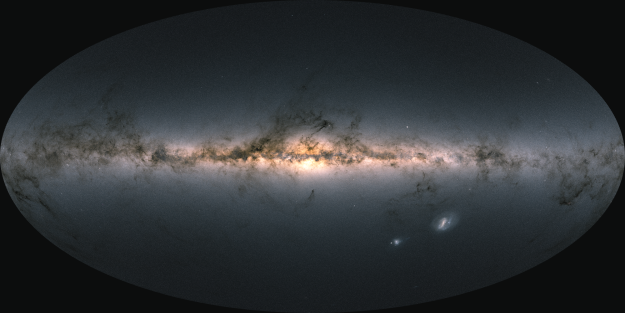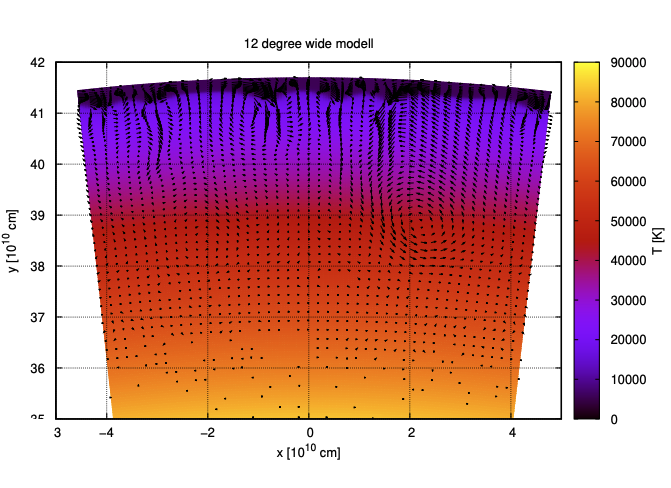Research topics
How much can we learn about pulsating stars through asteroseismology, astrometry and numerical models? The project will concentrate on the following research topics:
Asteroseismology of pulsating stars
 Ensemble asteroseismology of classical pulsators. Detection, classification and identification of the various low-amplitude modes in RR Lyrae, Cepheid and similar stars. Space-based photometry from the TESS and Kepler space telescopes provide us with thousands of high-quality light curves for this study.
Seismology-astrometry synergies. The revolutionary European Gaia mission complements the photometric data with distance, brightness, and color data for an incredible number of stars. We combine seismic inferences with physical properties from this mission.
Ensemble asteroseismology of classical pulsators. Detection, classification and identification of the various low-amplitude modes in RR Lyrae, Cepheid and similar stars. Space-based photometry from the TESS and Kepler space telescopes provide us with thousands of high-quality light curves for this study.
Seismology-astrometry synergies. The revolutionary European Gaia mission complements the photometric data with distance, brightness, and color data for an incredible number of stars. We combine seismic inferences with physical properties from this mission.
Binary pulsators, pulsators in binaries. Binaries can follow evolutionary paths very different from that of single stars. These can lead to pulsating components resembling normal pulsating variables at unexpected ages, while providing constraints single stars cannot, such as matching component ages, distances and compositions, as well as dynamical masses.
Stellar pulsation and evolution connections
Evolutionary and seismic models. We calculate large model grids with the MESA stellar evolutionary code and with linear stellar oscillation and non-linear stellar pulsation codes. We will use these models for asteroseismic model fitting, to constrain the physical parameters of the stars observed with TESS/Kepler and Gaia.
Origins of anomalous Cepheids. Studies suggest a mixture of two different formation channels: recent star formation and binary star mergers. However, it is not settled how many of these stars exist within our own Galaxy yet, and which of the two evolutionary processes has been more active here.
Strange-mode Cepheids: do they exist? Models predict some stars may pulsate in high-order, low-amplitude trapped modes, but detection in nature has been scant. We will try to find them.
Pulsation models in one and two dimensions
 Multi-dimensional models. Run, test and study models capable of calculating two- and three-dimensional wedges of stars, and develop the underlying code.
Multi-dimensional models. Run, test and study models capable of calculating two- and three-dimensional wedges of stars, and develop the underlying code.
Convective properties. Convection is only approximated in 1D codes. We search for the best parameters, how they affect stellar pulsation, and how they relate to more physical processes in 2D.
Mode interactions. Multi-mode pulsation modes are sensitive dynamical systems. In 1D models parameter tuning may lead to mode resonances, modulation and other effects. We study whether these models could explain peculiar pulsating stars. We also try to approximate the presence and effects of non-linear modes in the multi-dimensional models.
Software
You can find code and software developed by us at our GitHub page.
For 1D pulsation modeling, we use the Florida-Budapest hydrocode and the Radial Stellar Pulsation module of MESA (RSP, formerly known as the Warsaw hydrocode). You can read more about them here: Turbulent Convective Cepheid Models (Yecko et al., 1998), Double-mode Stellar Pulsations (Kolláth & Buchler, 2001), Formulation of Hydrocodes (Smolec & Moskalik 2016), MESA Instrument Paper V (Paxton et al. 2019). For the multi-dimensional pulsation models we use the SPHERLS code.
Funding Acknowledgement
The SeismoLab project is funded by the Élvonal (Forefront) Research Exellence Program of the Hungarian National Office for Research, Development and Innovation, from 01/09/2021 to 31/08/2026.
Other funding sources related to the project:
We closely collaborate with the Near-field cosmology and Stellar Pulsation Lendület groups, led by Róbert Szabó, between 2021-2023 and 2025-2026, respectively.
Collaborator Meridith Joyce is and EC REA Widening Fellow for 2022-24, which she secured through the H2020 MSCA Fellowship program of the European Commission.
| 2025-2026: Balázs Kertész is supported by the EKÖP-2025 University Research Scholarship Programme of the Ministry of Culture and Innovation. Klára Lelkes is supported by the National Higher Education Scholarship of the Ministry of Culture and Innovation. |
| 2024-2025: Csilla Kalup, Balázs Kertész and Gábor Kovács are supported by the 2024-2.1.1-EKÖP University Research Scholarship Programme of the Ministry of Culture and Innovation. |
| 2024-2026: SNN NKFIH grant for thematic research projects based on Hungarian-Slovenian cooperation, PI: Róbert Szabó. |
| 2023-2024: Csilla Kalup, Vázsony Varga, Dóra Takács, Anett Simon-Zsók and Viktória Fröhlich are supported by the ÚNKP-23-2 New National Excellence Program of the Ministry of Culture and Innovation. |
| 2023: NKSZ (International Conference Organization) funding for the MESA@Konkoly Summer School program from the Hungarian Academy of Sciences. |
| 2022-2023: Csilla Kalup, Vázsony Varga, Dóra Takács and Henryka Netzel are supported by the ÚNKP-22-2 New National Excellence Program of the Ministry of Human Capacities. |
| 2022: travel support for László Molnár via the Junior International Conference Grant of the Hungarian Academy of Sciences. |
| 2022: travel support for Csilla Kalup and Rozália Ádám from the ELTE Council For Talent Support. |
| 2021-2022: Csilla Kalup is supported by the ÚNKP-21-2 New National Excellence Program of the Ministry of Human Capacities. |
| 2020-2023: Zsófia Bognár is supported by the János Bolyai Research Scholarship of the Hungarian Academy of Sciences. |